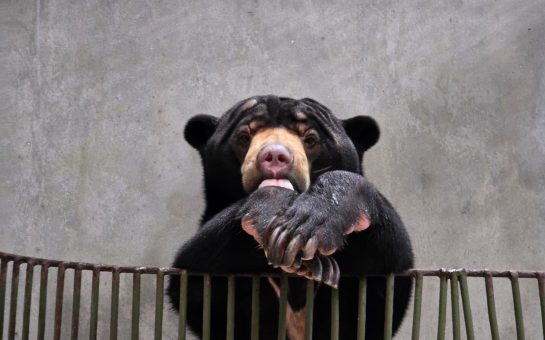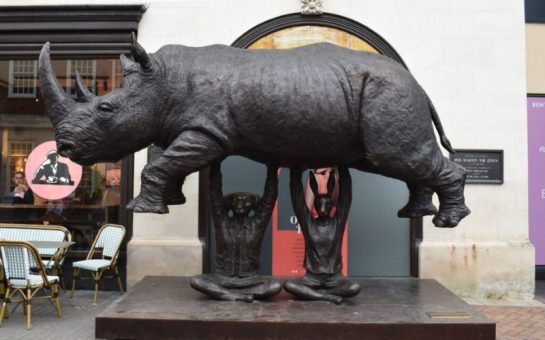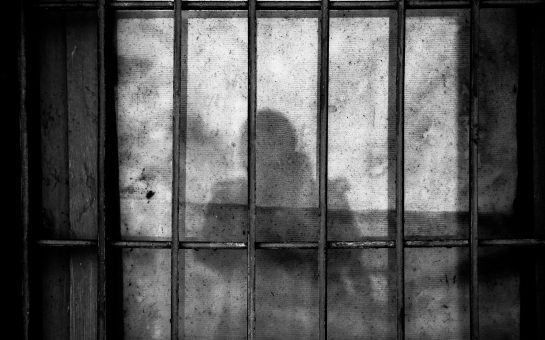Erika Flowers arrived at HMP Holloway in 2014.
As the Serco van approached the prison gates she began her six-year sentence, serving three years between the north London jail before its closure and HMP Send.
Through 1,400 postcard illustrations, Erika documented her prison story and hopes that her art can be used to educate the public and those inside prisons providing a visual insight into prison life and the power of art.
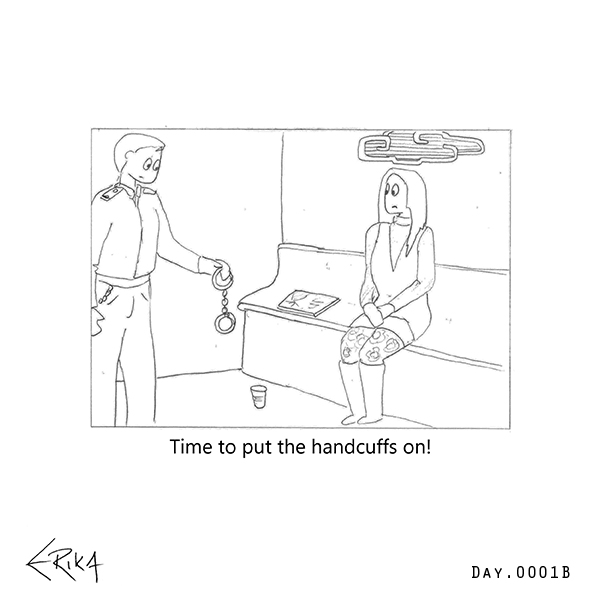
The use of postcards was entirely accidental.
Erika received a batch of 2,000 blank postcards from friends and family that were intended to be used for a prison art competition, but after missing the deadline she decided to put them to a different use.
The illustrations document emotional challenges, the strains on relationships with loved ones, what prison looks like and feels like, all with a touch of humour.
The daily ritual became a private place for her thoughts, kept in a shoebox tucked under her cell bed.
The ten-minute illustrations on the small postcards were a simple form of therapy using basic materials, a pen and a piece of paper.
Erika said: “For the first three months I was on bail, I was like a rabbit in the headlights just in shock.
“But as soon as I knew I would be going into the prison system I thought I was going to experience something that very few people would, so I thought let’s try and show people how to get through it.”
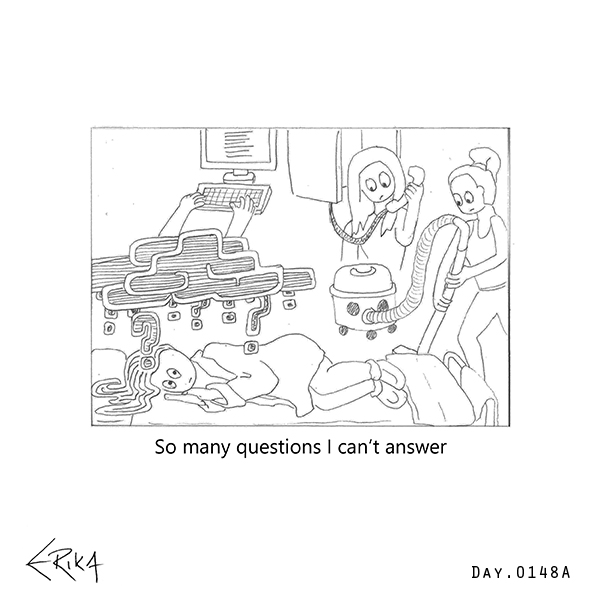
Early days
The early days were challenging and Erika often felt depressed.
She said: “You’re flooded with so many of your own emotions and to add to that the emotions that you’re family are going through and the hurt that they might have.
“Holloway is a labyrinth. It’s very disorienting but its layout actually gave it a real sense of intimacy.
“Each pocket of each landing developed different personalities depending on the women there at that time and I think it helped build relationships with the officers and the women.”
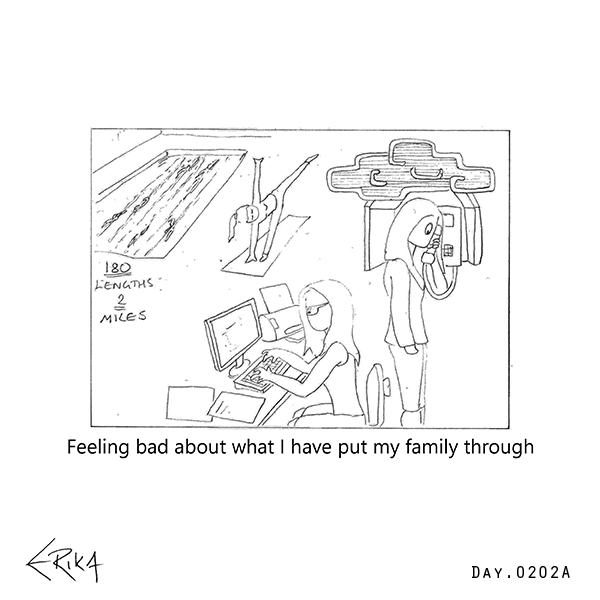
Memorable moments are also captured in the postcards including the solar eclipse, which Erika and her inmates were able to watch by the ‘gym tree’, situated in the gardens just outside the gym where she worked.
She said: “I think it’s special because it’s a little blip out of reality. The fact that we could all stand outside together and do that was really special as Holloway was all very locked up.”
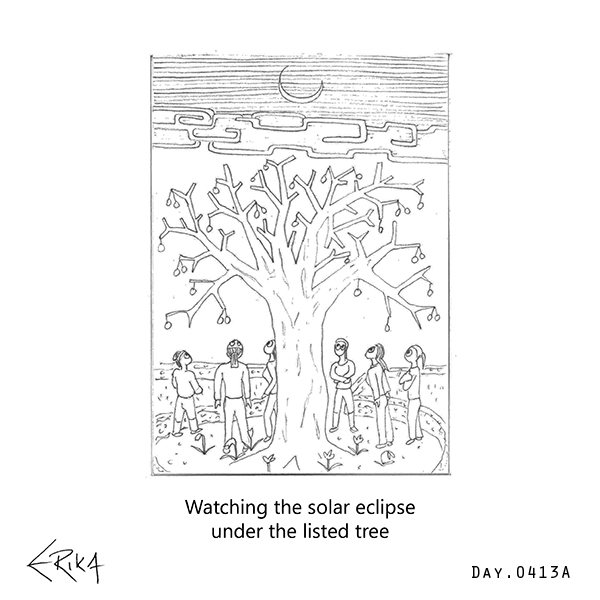
Erika came across the arts charity, Koestler Arts, in an advert in Inside Time, a national newspaper for prisoners and detainees.
Whilst serving her sentence, Erika won multiple Koestler awards including her first submission in 2016, an acrylic painting of the closure of Holloway Prison on a scrap pinboard.

Having experienced the therapeutic power of art in prison Erika hopes that her work can inspire others.
She said: “There are so many reasons why being creative in prison is such a good thing. It can be really rehabilitative.
“I hope that my things would inspire other people, because it’s quite a meditative experience and the process of actually doing it can really help you get through something.
“There’s a cathartic thing about drawing or writing to put it to rest and that reflection is so useful. I’m so glad I got that record, if I hadn’t done that we wouldn’t be having this conversation and I hope that it’s something that other people can learn from.”
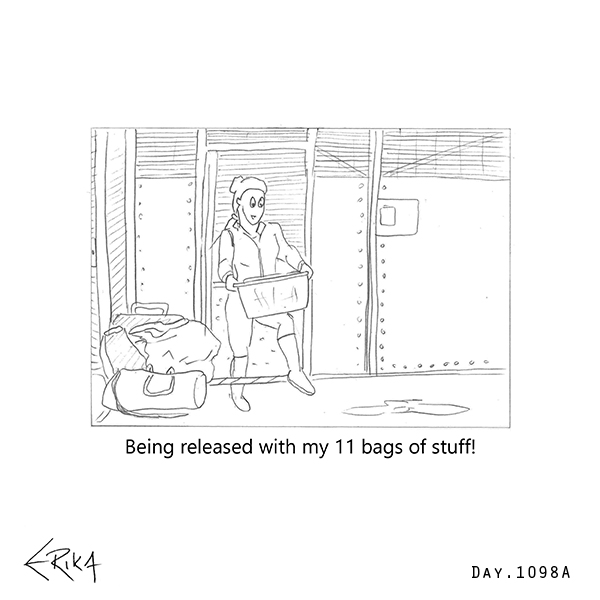
Erika works closely with It’s Not Your Birthday But, and a range of prison charities including the National Criminal Justice Arts Alliance and the Prison Reform Trust.
While art has proven beneficial to prisoners it can also be used to help with public education about prisons.
Alongside Koestler Art’s mentoring scheme, the charity holds annual awards and public exhibitions of prison artwork at the Southbank Centre.
Previous competition judges have included George the Poet and Grayson Perry, with entrants covering 52 categories with art made from a variety of materials like matchsticks, prison soaps and drawings on complaints forms.
The charity’s CEO, Sally Taylor, spoke about the importance of the arts in prisons and challenging public perceptions.
She said: “I think prisons and the people in them are pretty low down in people’s agendas and I always say there aren’t any votes in criminal justice.
“Obviously I’m generalising, but I think quite a lot of people have very little idea about the kinds of people that end up in prison and how a lot of them never stood a chance in the first place.
“I think what we can do at Koestler Arts is show the art that comes out of prisons hoping that people appreciate the talent that exists, which may tell them a bit more about who we’re locking up.
“We hope that by bringing the art to people’s attention we can change a few people’s ideas about those who are inside.”
She adds that whilst prisoner access to art materials and programmes are patchy and vary among prisons, she encourages local arts communities and prisons to work together.
During the pandemic, Koestler’s latest exhibition was held online and in the windows of the Southbank Centre and the charity has provided art aid sheets as a source of in-cell inspiration for prisoners.
Featured image credit: Erika Flowers
